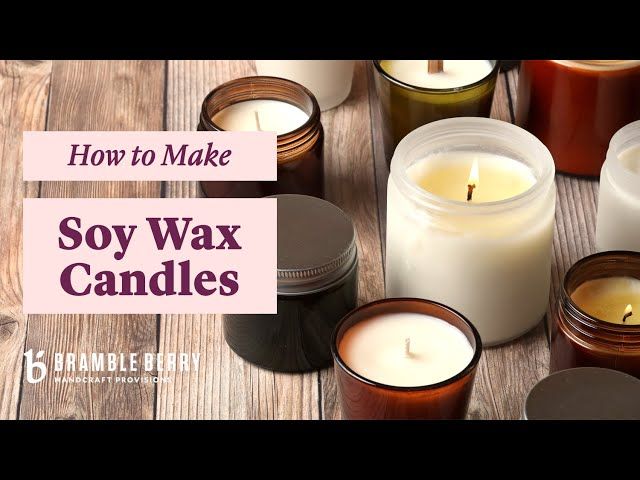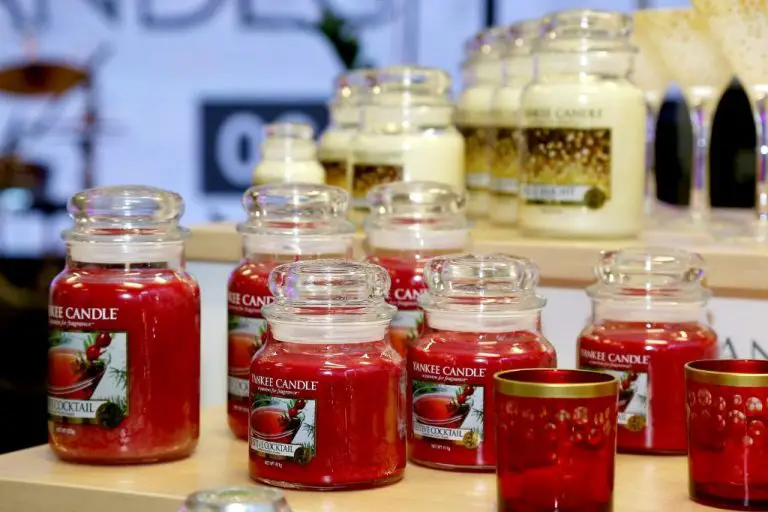How Do I Start A Candle Business With No Inventory?
Determine Your Niche
When starting a candle business with no inventory, the first step is to determine your target niche and ideal customer demographic. Research shows the overall candle market was valued at $12.88 billion in 2022 and is expected to grow at a CAGR of 5.7% from 2023 to 2030 (Grandview Research). However, within this broad market, there are many specific niches and opportunities to differentiate.
Consider what types of candles you want to focus on – scented, shaped, color variations, container styles, etc. For example, you may decide to specialize in luxury scented candles vs basic utility candles. Or you may focus on seasonal shapes and scents vs year-round classics. Defining your niche helps you create the right branding, positioning and product lineup.
Understand who your target customer is and what motivates their purchasing decisions. Candle purchasers may be gift givers, home decorators, aroma therapy enthusiasts, etc. Research demographic factors like age, gender, income level, lifestyle, values and interests. This allows you to tailor your marketing and connect emotionally with your audience (LinkedIn).
Research Legal Requirements
One of the first steps in starting a candle business is understanding the legal requirements. While there are no specific licenses needed for candle making, you will likely need general business licenses and permits depending on your location and operations [1]. These may include a sales tax permit, zoning permit home occupation permit if working from home, and a Certificate of Occupancy if required by your county or city regulations [2].
You’ll also need to follow safety regulations for candle making set forth by the Consumer Product Safety Commission and FDA. This includes proper labeling with weight, contents, warning labels, and contact information. Having insurance like general liability and product liability is highly recommended to protect yourself from potential claims or lawsuits.
Consult local business licensing agencies and talk to an insurance agent to ensure you have the proper permits, licenses, and coverage to operate legally and safely.
Source Candle Making Supplies
When starting a candle business with no initial inventory, your first major task will be sourcing all the supplies you need to make high quality candles. The main supplies are wax, wicks, fragrance oils, and containers. You’ll need to identify reputable vendors and suppliers that cater to small businesses and have reasonable minimum order quantities.
For wax, look for vendors like Candlewic (https://candlewic.com/) that offer a wide variety of wax types in smaller quantities. Paraffin, soy, and beeswax are common options. Make sure to get wax that is specifically formulated for candles. The quality of wax impacts burn time, scent throw, and more.
Wicks are another critical component, as they impact burn rate, melt pool, and hot throw. Wick suppliers like Lone Star (https://www.lonestarcandlewicks.com/) allow you to purchase smaller packs of pre-tabbed wicks to test what works best with your wax type, fragrance load, and container size.
For fragrance oils, which provide candles with aroma, check companies like Nature’s Garden (https://www.naturesgardencandles.com/) and Candle Science (https://www.candlescience.com/) that offer high quality oils designed specifically for candle making. Avoid using crude or craft-store quality oils.
Finally, containers can be purchased from sites like Uline (https://www.uline.com/) and Berlin Packaging (https://www.berlinpackaging.com/). Look for affordable options when first starting out, like simple glass jars and tins. Consider minimum order quantities when selecting vendors.
By finding the right candle making supply vendors, you can source all the materials you need without having to invest in large inventory upfront. Pay close attention to quality to ensure your finished candles meet expectations.
Create Your Workspace

Having a dedicated candle making area is crucial for product quality and safety. Make sure to set up your workspace in an area with proper ventilation, as advised by Scandinavian Candle. The ideal temperature range is between 66-77°F. Open windows or use fans for airflow.
Follow all local fire safety regulations. Have a fire extinguisher on hand. Eliminate clutter and be diligent about cleanliness to reduce contamination and fire hazards. Proper storage of flammables is also critical.
Invest in equipment designed for candle making, like thermometers, double boilers, wax melters, molds, and pouring pots. Arrange your workspace efficiently for the candle production process. Have areas set up for preparing materials, melting wax, pouring, cooling finished products, and cleanup.
Develop Candle Making Process
Perfecting your candle making process is crucial for producing quality candles consistently. Start by researching and testing wax, fragrance oil, and wick combinations to create your ideal candle recipes that burn cleanly and have excellent scent throw. Refer to sites like https://www.candlescience.com/learn-candle-making/ for guidance on mixing ratios and testing.
Invest in proper equipment like thermometers, double boilers, and mixing containers to improve process control. Set up an efficient production workspace that allows you to easily melt wax, add fragrance, pour into containers, insert wicks, and clean up between batches. Document your procedures to ensure consistency. Always test new candle recipes thoroughly by burning samples and tweaking as needed before making large batches.
Quality control is critical. Examine finished candles for issues like sinkholes, poor surface finish, soot, mushrooming wicks, etc. Refine techniques and recipes until candles burn cleanly down to the bottom. With careful process development and testing, you can perfect candle formulas that delight customers batch after batch.
Market Your Business
Marketing is crucial for getting the word out about your new candle business and attracting customers. Focus on developing a strong brand identity, creating professional packaging, building an online presence, and using targeted advertising and promotions to connect with your target market.
Come up with a memorable business name and logo that reflects your brand image and aesthetics. Design appealing, high-quality packaging that protects your candles and displays key information. Custom label stickers with your logo help brand your products. Ensure your website and social media profiles look professional and convey your brand story. Share product photos, behind-the-scenes content, and engage with followers.
Run targeted ads on platforms like Facebook and Instagram focusing on relevant interests like home decor and scented candles. Promote your business at local craft fairs, markets, and events related to your niche. Offer promotions like 10% off or free shipping to incentivize purchases. Capture high-quality product and lifestyle images to use across platforms. Optimize your online product listings with detailed descriptions, specs, images, and keywords. This will help customers find your products through search.
By investing time into branding, packaging, online presence, and strategic marketing, you can build awareness and get your candles in front of ideal customers.
Manage Operations
Managing operations effectively is crucial for any small business, especially one starting out with no inventory like a candle company. Some key operational areas to focus on include order fulfillment and shipping, inventory management, and accounting and bookkeeping.
To fulfill orders and handle shipping, look into contracting with a third party fulfillment company or leverage drop shipping to avoid holding inventory yourself. Carefully research potential partners and integrate their systems or processes with yours for smooth order processing. Define service level agreements for order turnaround time and implement quality control checks. Also factor in packaging and shipping costs when pricing products.
Even without holding physical inventory, inventory management is still important for tracking product availability and reorder points. Use inventory software to connect with suppliers and monitor real-time stock levels. Integrate this with your sales channels to keep product listings up-to-date. Forecast demand and establish ideal reorder quantities to minimize risk of backorders.
Work with an accountant or bookkeeper to establish systems for invoicing, tracking expenses and payments, payroll, tax preparation, and financial reporting. Using accounting software can help automate and streamline many tasks while giving you real-time visibility into the financial health of your business. Consider contracting a virtual assistant to help manage day-to-day bookkeeping activities.
Establish Sales Channels
When starting a candle business with no inventory, you’ll need to establish sales channels to get your products in front of customers. Here are some options to consider:
Online Shop
Creating an online shop, such as through Shopify or Etsy, allows you to sell your candles to a global audience with minimal upfront investment. You can drive traffic to your online shop through SEO, social media, and digital ads. Fulfill orders as you make them or work with a fulfillment service.
Retail Outlets
Consider placing your candles in local retail stores on consignment. This allows you to test sales before committing inventory. Explore gift shops, boutiques, salons, and other relevant retailers in your area. Provide store displays and marketing materials.
Wholesale
Wholesaling allows you to sell large volumes of candles to resellers. Identify boutiques, gift shops, and other potential wholesale buyers and provide samples to land accounts. Attend trade shows to network and find new wholesale partners.
Events
Set up booths at craft fairs, festivals, and holiday markets to sell your candles directly to consumers. Events allow you to interact with customers, get feedback, and raise awareness for your brand.
Financial Considerations
Starting a candle business requires some upfront investment. According to SmallBizTrends, candle business startup costs typically “range from $9,500 to $43,000” (How to Start a Candle Business: A Step-by-Step Guide). This covers equipment like wax melters, molds, raw materials, packaging supplies, labels, and inventory. You also need to factor in licensing fees, a dedicated workspace or retail location, insurance, marketing expenses, and professional services like legal and accounting.
Once operational, your ongoing candle business expenses will include raw materials, packaging, rent, utilities, insurance, advertising, payroll if you have employees, credit card processing fees, shipping costs, etc. You need to price your products to deliver a reasonable profit margin above these costs. FinModelsLab recommends pricing your candles at 3-4 times your raw material costs. Track your expenses closely and regularly evaluate your pricing.
For funding, look into small business loans, crowdfunding campaigns, business plan competitions, friends and family, or your own savings. A well-researched business plan can help attract investors and get approval for small business financing options.
Growing Your Business
As your candle business grows, you’ll need to scale production to meet increasing demand. Some ways to expand capacity include renting a larger workspace, investing in additional equipment like more wax melters, and streamlining processes.1
Consider expanding your product line to boost revenue. Experiment with new scents, jar styles, and candle types like votives and pillars. Limited edition seasonal candles can also attract buyers. You could even expand into related products like room sprays, soap, and candle accessories.1
At some point, you may need to hire employees to keep up with orders. Key roles to fill first include production assistants, customer service reps, and social media marketers. Outsource shipping and bookkeeping if needed. Hiring allows you to focus on big picture strategy while delegating daily tasks.1



